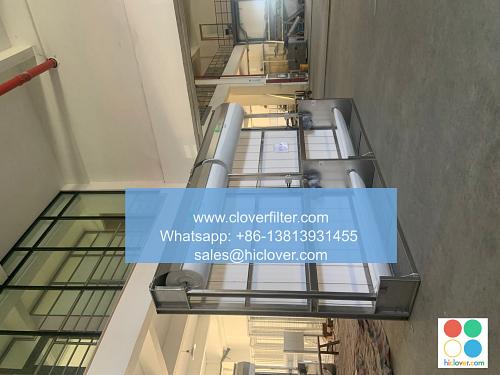The Science Behind Air Filters: Understanding the Technology and Its Applications

Air filters are an essential component in maintaining good indoor air quality, and their technology has advanced significantly over the years. From HEPA filters to activated carbon filters, these devices use various mechanisms to capture particulate matter, gases, and odors, improving the overall indoor air quality. In this article, we will delve into the science behind air filters, exploring their technological advancements and applications in various fields.
How Air Filters Work
Air filters operate on the principle of filtration, where airborne particles are captured by a filter medium. The filter medium can be made of various materials, such as fibers, membranes, or granular activated carbon. As air passes through the filter, the particles are trapped, and the clean air is released. The efficiency of an air filter is determined by its ability to capture particulate matter of different sizes, including PM2.5 and PM10.
Types of Air Filters
There are several types of air filters, each with its unique characteristics and applications. Some of the most common types include:
* HEPA filters: High Efficiency Particulate Air filters, which can capture 99.97% of particles as small as 0.3 microns.
* Activated carbon filters: Used to capture gases and odors, these filters are often used in air purifiers and ventilation systems.
* UV filters: Use ultraviolet light to neutralize bacteria and viruses.
* : Release negative ions to attract and trap particulate matter.
Applications of Air Filters
Air filters have a wide range of applications, including:
* Indoor air quality improvement: Air filters are used in homes, offices, and public spaces to improve the air quality and reduce the risk of respiratory problems.
* Industrial applications: Air filters are used in manufacturing, pharmaceutical, and food processing industries to maintain a clean environment and prevent contamination.
* Transportation: Air filters are used in vehicles, airplanes, and trains to improve the air quality and reduce the risk of airborne illnesses.
* Medical applications: Air filters are used in
Advancements in Air Filter Technology
The technology behind air filters is constantly evolving, with advances in materials science, nanootechnology, and computational modeling. Some of the recent developments include:
* Nanofiber filters: Use nano-sized fibers to capture ultrafine particles.
* Smart filters: Use sensors and algorithms to monitor and optimize the filter performance.
* Biodegradable filters: Made from biodegradable materials, these filters reduce waste and minimize environmental impact.
Conclusion
In conclusion, air filters are a crucial component in maintaining good indoor air quality, and their technology has advanced significantly over the years. From HEPA filters to activated carbon filters, these devices use various mechanisms to capture particulate matter, gases, and odors. With their wide range of applications, including indoor air quality improvement, industrial applications, transportation, and medical applications, air filters play a vital role in improving our health, safety, and well-being. As the technology continues to evolve, we can expect to see even more innovative and effective air filter solutions in the future. You haven’t asked a question or provided any context. What would you like to talk about?

